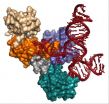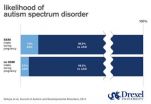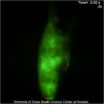(Press-News.org) As the developing world continues to develop, standards of living and access to technology increases. Unfortunately, as personal computers, laptops and mobile phones become increasingly common so the problem of recycling and disposal of such devices when they become technologically obsolete rises too, according to research published in the International Journal of Environmental Technology and Management.
Neelu Jain of the PEC University of Technology, in Chandigarh and Pamela Chawla of the Surya World, Surya World Technical Campus in Punjab, India, have estimated the potential number of obsolete desktop and notebook computers and the quantity of various toxic components that will be generated from these devices over the next ten to fifteen years in India. They suggest that it will take three decades at the current rate of penetration before there is one computer per capita across the nation. However, there will be higher-end users who have more than one device and given a population of almost 1.3 billion, this conservative rate of growth means a lot of computers to be disposed of in that time.
As such, their research suggests that there will be 126 million desktop computers and 900 million notebook computers that will be past their life expectancy by the year 2025. They suggest that computer recycling capacity will need to be able to cope with more than a billion PCs by 2020. "These results will help waste management authorities in planning appropriate infrastructure and facilities for handling, recycling and disposal of this hazardous waste," the team says. "This analysis does not address distribution of obsolete computers for reuse, recycling and landfill options nor their storage time, which is an important issue to resolve in the future."
Electronic waste or e-waste is the collective name for discarded electronic devices and is a growing problem worldwide as users and businesses upgrade computer equipment and other devices. Given that many of the electronic and other components of such equipment use toxic elements, including arsenic, cadmium, lead, mercury and various plastics and polymers that can also degrade to toxic compounds, there is a pressing need to manage e-waste with consideration for human health and the environment.
INFORMATION:
Jain, N. and Chawla, P. (2014) 'Future outflows of toxic material from end-of-life computers in India', Int. J. Environmental Technology and Management, Vol. 17, Nos. 2/3/4, pp.237.
Toxic computer waste in the developing world
2014-06-03
ELSE PRESS RELEASES FROM THIS DATE:
Nano-platform ready: Scientists use DNA origami to create 2-D structures
2014-06-03
Scientists at New York University and the University of Melbourne have developed a method using DNA origami to turn one-dimensional nano materials into two dimensions. Their breakthrough, published in the latest issue of the journal Nature Nanotechnology, offers the potential to enhance fiber optics and electronic devices by reducing their size and increasing their speed.
"We can now take linear nano-materials and direct how they are organized in two dimensions, using a DNA origami platform to create any number of shapes," explains NYU Chemistry Professor Nadrian Seeman, ...
Scientists capture most detailed images yet of tiny cellular machines
2014-06-03
MADISON, Wis. — A grandfather clock is, on its surface, a simple yet elegant machine. Tall and stately, its job is to steadily tick away the time. But a look inside reveals a much more intricate dance of parts, from precisely-fitted gears to cable-embraced pulleys and bobbing levers.
Like exploring the inner workings of a clock, a team of University of Wisconsin-Madison researchers is digging into the inner workings of the tiny cellular machines called spliceosomes, which help make all of the proteins our bodies need to function. In a recent study published in the journal ...
Preventive services by medical and dental providers and treatment outcomes
2014-06-03
Alexandria, Va., USA – The International and American Associations for Dental Research (IADR/AADR) have published a paper titled "Preventive Services by Medical and Dental Providers and Treatment Outcomes." Nearly all state Medicaid programs reimburse non-dental primary care providers (nDPCPs) for providing preventive oral health services to young children; yet, little is known about how treatment outcomes compare to children visiting dentists. This study compared the association between the provider of preventive services (nDPCP, dentist or both) to Medicaid-enrolled children ...
New Ichthyosaur graveyard found
2014-06-03
Boulder, Colo., USA – In a new study published in the Geological Society of America Bulletin, geoscientists Wolfgang Stinnesbeck of the University of Heidelberg and colleagues document the discovery of forty-six ophthalmosaurid ichthyosaurs (marine reptiles). These specimens were discovered in the vicinity of the Tyndall Glacier in the Torres del Paine National Park of southern Chile. Among them are numerous articulated and virtually complete skeletons of adults, pregnant females, and juveniles.
Preservation is excellent and occasionally includes soft tissue and embryos. ...
Miniature digital zenith telescope for astronomy and geoscience
2014-06-03
As a kind of ground-based optical astrometric instrument, zenith telescope observes stars near zenith, which substantially reduces the influence of normal atmospheric refraction. Its high-precision observations can be used to calculate astronomical latitude and longitude, which are mainly applied in mobile measurement for deflection of the vertical, long-term measurement for the variations of the vertical, and related researches of astronomical seismology. Utilizing CCD camera, high-precision tiltmeter and other new technologies and devices, Chinese researchers have successfully ...
Image release: A violent, complex scene of colliding galaxy clusters
2014-06-03
Astronomers using the Karl G. Jansky Very Large Array (VLA) and the Chandra X-Ray Observatory have produced a spectacular image revealing new details of violent collisions involving at least four clusters of galaxies. Combined with an earlier image from NASA's Hubble Space Telescope (HST), the new observations show a complex region more than 5 billion light-years from Earth where the collisions are triggering a host of phenomena that scientists still are working to understand.
The HST image forms the background of this composite, with the X-ray emission detected by Chandra ...
In utero exposure to antidepressants may influence autism risk
2014-06-03
PHILADELPHIA (June 2, 2014) – A new study from researchers at Drexel University adds evidence that using common antidepressant medications during pregnancy may contribute to a higher risk of autism spectrum disorders (ASD) in children, although this risk is still very small.
Results from past studies of prenatal use of selective serotonin reuptake inhibitors (SSRIs) and ASD risk have not been consistent. An ongoing challenge in this line of research is trying to tease apart potential effects of the medication on risk from the effects associated with the condition for ...
Breaking down barriers
2014-06-03
The Gobi-Steppe Ecosystem is world renowned for its populations of migratory ungulates, which cover great distances in search of forage. Researchers at the Research Institute of Wildlife Ecology at Vetmeduni Vienna have documented, that in just one year an individual wild ass can range over an area of 70,000 km2. "Wild asses and gazelles have to be permanently on the move and travel very long distances to find enough food. Rainfall is highly variable in this region. As a consequence pastures are patchy and unpredictable in space and time," explains Petra Kaczensky, one ...
Lasers and night-vision technology help improve imaging of hidden lymphatic system
2014-06-03
VIDEO:
This is a movie illustrating the lack of lymphatic flow in the lower leg of a subject with lymphedema.
Click here for more information.
WASHINGTON, June 3, 2014—The human lymphatic system is an important but poorly understood circulatory system consisting of tiny vessels spread throughout the body. This "drainage" network helps guard against infections and prevents swelling, which occasionally happens when disease or trauma interrupts normal lymphatic function. Chronic ...
Security guard industry lacks standards, training
2014-06-03
EAST LANSING, Mich. --- Despite playing a more important role in the wake of 9/11, the security guard industry remains plagued by inadequate training and standards in many states, indicates new research by Michigan State University criminologists.
Formal training of the nation's 1 million-plus private security officers is widely neglected, a surprising finding when contrasted with other private occupations such as paramedics, childcare workers and even cosmetologists, said Mahesh Nalla, lead investigator and MSU professor of criminal justice.
By and large, security ...





